Parshas Ki Sisa
On last Shabbos we read the Parsha of Ki Sisa.
Luchos Shenios
On the verse “p’sal lecha”, where the Aibishter tells Moshe Rabbeinu to prepare the Luchos Shenios, the second set of Tablets for the Ten Commandments, (seeing that Moshe broke the first ones), Rashi brings from the Medrash Tanchuma an allegory to explain why it is appropriate that Moshe prepare the second Luchos.
Rashi reads like this approximately, “one can make a parable to a king who left his country on a trip, and he left his fiance/wife with the maidservants. As a result of the misbehavior of the maidservants the fiance/wife also got for herself a bad name. The king’s good friend stood up and tore up the wedding contract, saying, that if the king should want to sentence her with the death penalty, he will come to her defense saying that she is not yet his wife, there’s no wedding contract.
When the king came back he checked into all the facts and found out indeed that all of the guilt was only with the maidservants, so he made peace with his wife. The friend told him, “You’d better draw up another marriage contract, the first one was torn up.” Answered the king, “You yourself are the one that ripped up the first one, so you go out and buy new paper, and then I’ll write up a new one for her with my own hand.”
The king is the A’lmighty, the maidservants are the erev rav, the king’s friend is Moshe and the king’s fiance/wife is Yisroel, therefore He said, “P’sal lecha.”
The questions on the simple understanding are numerous. I will relate to three, starting with the one that I saw in the commentators on Rashi: Even in the allegory, how can the friend say that he didn’t yet marry her, the king doesn’t know what he did, whether he married her or not? How did the friend expect to convince the king that they were not married on the basis that he destroyed the marriage contact? And in particular when we come to grips with the fact that in the nimshal the king is the Ribbono Shel Olam Himself, who is Moshe trying to kid?
We also have to understand that which it comes out in the end that all the guilt was with the erev rav, and Yisroel was clean, lech’ora it is explicit in the verses in the Parsha that Yisroel was also guilt ridden. The Bnei Levi killed approximately 3000 of their relatives, additionally the Aibishter told Moshe Rabbeinu when He was willing to forego immediate punishment, that the retribution for the sin will be spaced out throughout the generations.
And on the other hand, on the side that Yisroel was guiltless, then what was the tachlis in Moshe’s breaking the luchos, especially in light that Chazal say that the A’lmighty said to Moshe, “Asher Shavarta, yasher koach she’shavarta”, that the Ribbono Shel Olam got satisfaction that Moshe broke the first Tablets. What did it accomplish?
What seems to me is that indeed there was a kitrug, an accusation, on Klal Yisroel for what went on there at the egel. And indeed there were actions there for which at least some of Klal Yisroel had coming to them the death penalty. What does it mean that the Aibishter said that the whole blame was on the erev rav and not on Yisroel? Because the root of the guilt was with the erev rav in that they did the idolatry with their penimius, with their whole soul, with their inner beings. Those of Klal Yisroel who were caught up, were exactly that, just caught up. Their Avoda Zara was only in chitzonius, lip service, an outward show. It was wrong, don’t misunderstand me, but it wasn’t with their hearts, they weren’t ready to forsake the A’lmighty and go serve sticks and stones. On that Kitrug, Moshe Rabbeinu broke the first Luchos.
Let me explain. In my post on the Seventh day of Pesach I wrote regarding the kitrug that was there at Yam Suf, Halalu etc., that the Bais Din shel Ma’ala never received a proper answer to their tayna, “why should we split for them etc…” Because there was really no answer from their perspective. By Krias Yam Suf the Aibishter did a Hanhaga of “be’Atika talya milsa”. Atika, relating to the higher Hanhaga, above the regular worldly Hanhaga which works with the Middos. There was no earthly answer to Halalu, it works with Rachamim bli taam. Because, period.
So too, in our parsha, the Hanhaga that was revealed was one of the Yud Gimel Middos of Rachamim, which indeed is written here on the spot. The explanation to say that the guilt was completely with the erev rav was a chidush, a Hanhaga of the Aibishter built on Yud Gimel Middos of Rachamim. From a worldly standpoint those Yidden that did what they did, got what they got. And yet it isn’t a contradiction for the Ribbono Shel Olam to say that the guilt was entirely with the erev rav.
There is a certain mitigating aspect when one gets caught up with the crowd doing wrong. This I heard once from Rav Noach Weinberg from Aish HaTorah, who explained that by Ir HaNidachas we find both a stringency and a leniency. A normal Ovaid Avoda Zara gets Skila, stoning, the worst of all the capital punishments. These people who got caught up with the crowd get sayif, decapitation, one of the more lenient executions, so to speak. On the other hand, when evil is so rooted in that everybody is doing it, then you have to burn it out — normally someone who is executed passes his wealth over to those who inherit him. But with Ir HaNidachas you have to burn up everything.
Moshe Rabbeinu broke the Luchos in order to lessen the kitrug which was there from a worldly perspective. But still HaKadosh Boruch Hu with the Yud Gimel Middos of Rachamim still held Yisroel to be intact.
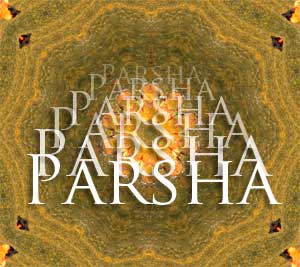
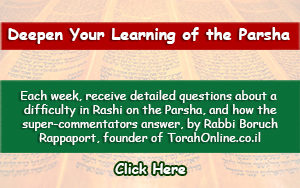

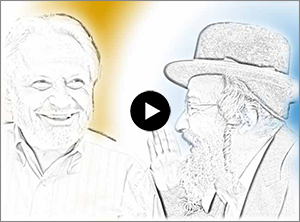
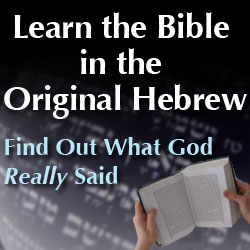
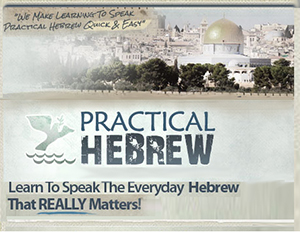
2 Comments
Amy
March 13, 2020I thank you kindly, dear Rabbi Boruch for this very enlightening lesson. I truly appreciate all that I am learning from you. As a Jewess, living in South Africa, remaining connected to my Jewish roots through your teachings, is a fundamentally important factor in my life.
Toda Raba
Shalom
Amy
Boruch Rappaport
March 13, 2020Thank you, Amy, for your warm feedback.
In answer, take a look at what I wrote here:
https://boruchrappaport.net/jewish-beliefs/parshas-shemos/
in particular the story about the Chasam Sofer at the end.
I am pleased to be a conduit to share with you Hashem’s Holy Torah.
Your passion to remain connected I am sure is lighting up all of South Africa.
Much blessings and success in all of your endeavors!
Leave A Response